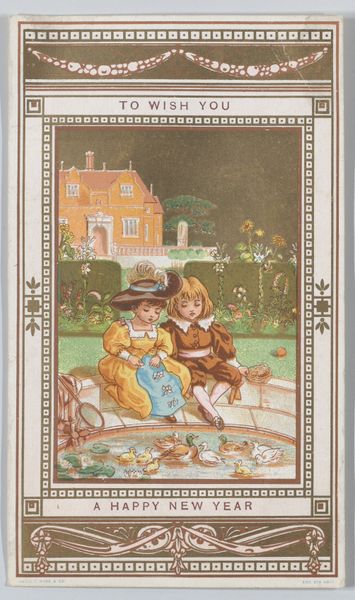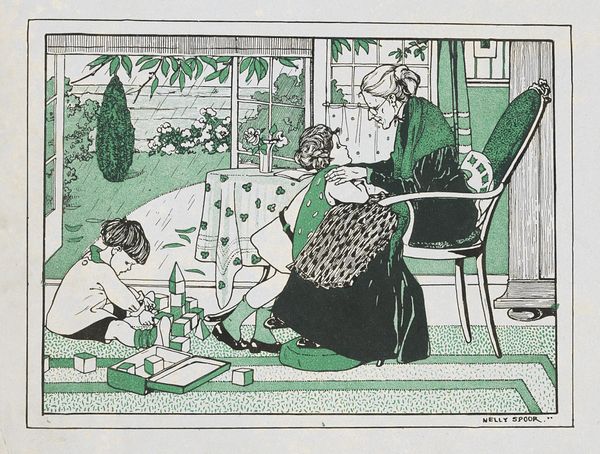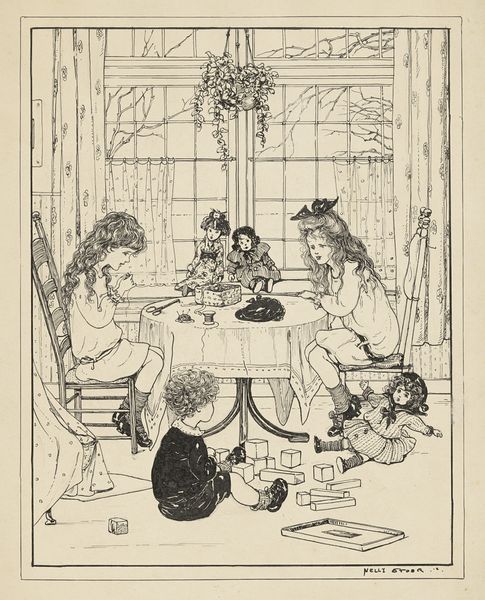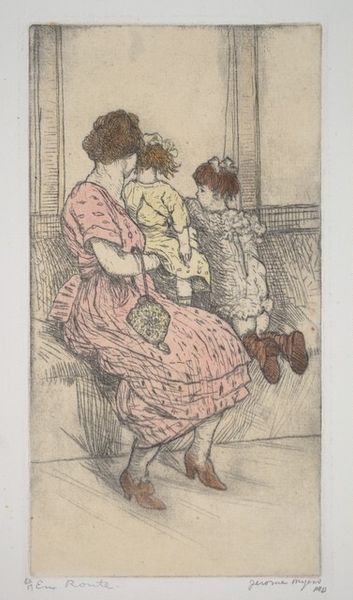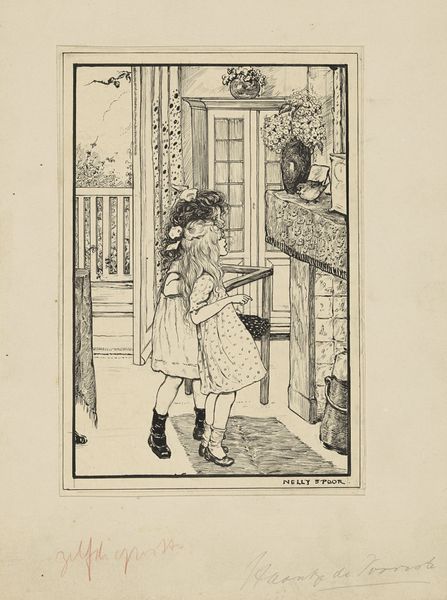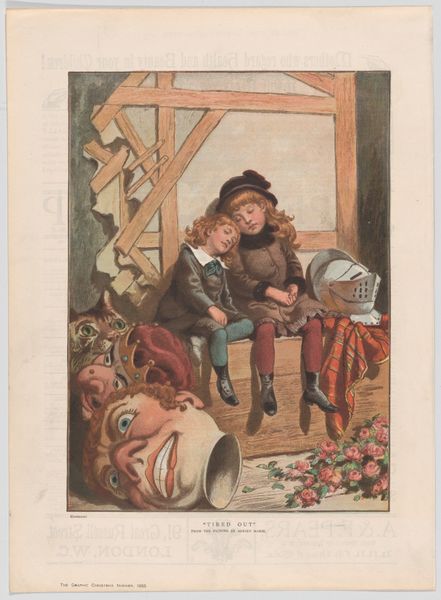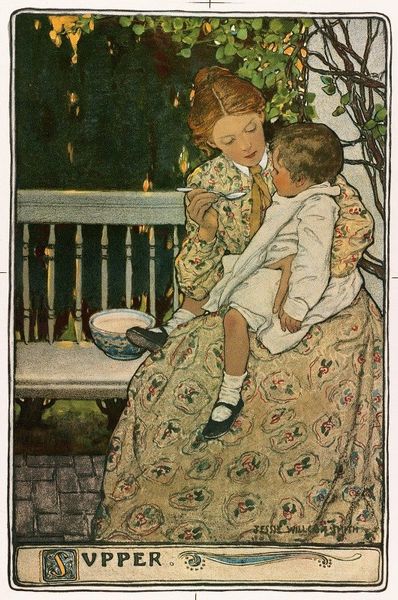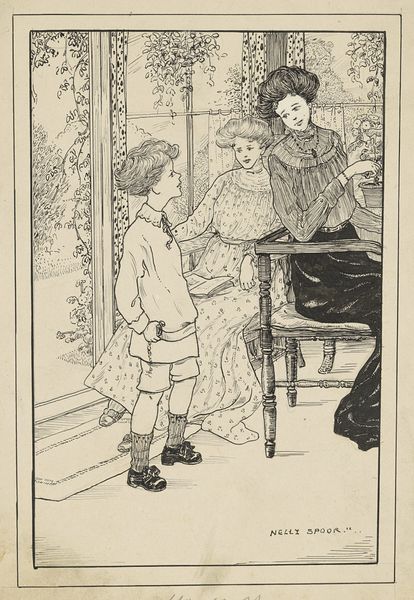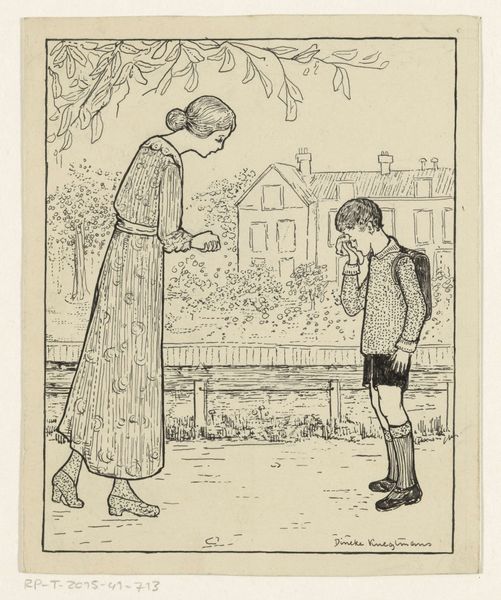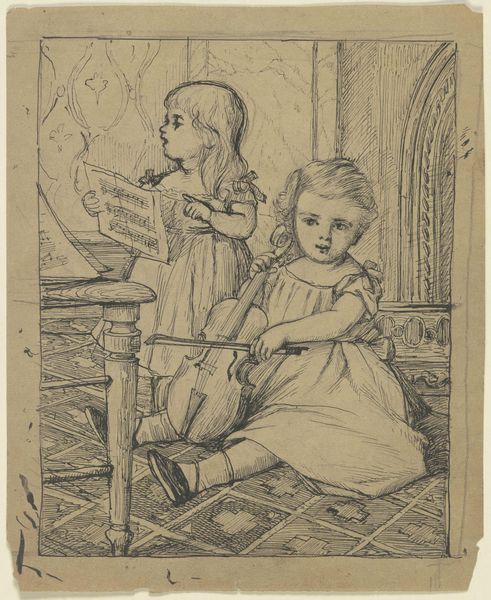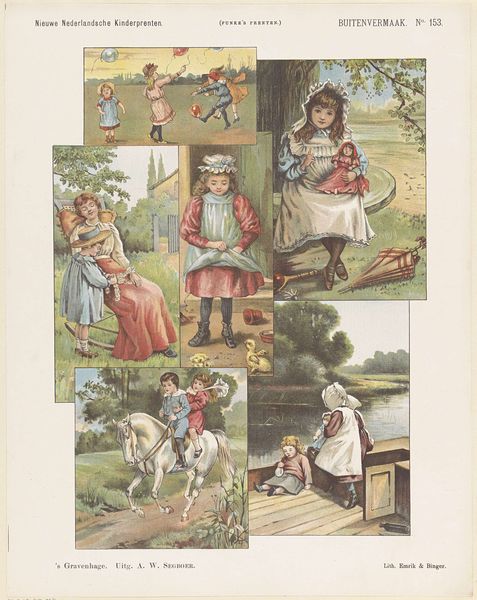
painting, watercolor, poster
#
art-nouveau
#
narrative-art
#
painting
#
landscape
#
watercolor
#
coloured pencil
#
cityscape
#
genre-painting
#
poster
#
modernism
Copyright: Public Domain: Artvee
Curator: This is "L’Emprunt de la Paix," or "The Peace Loan," created by Henri Lebasque in 1920. What springs to mind for you here? Editor: It feels like two worlds colliding—a serene, nurturing foreground against the stark industrialization rising behind it. Bittersweet, wouldn’t you say? Almost a promise, tinged with anxiety. Curator: Lebasque, with such tenderness, positions the mother and children so firmly at the forefront—almost as though staking a claim. Do you find any contradiction in this duality? Editor: Well, contradictions are often the very soul of lived experience. Here we see postwar reconstruction juxtaposed with traditional modes of living. Look how laborers assemble blocks of stone while chimneys spew smoke, horses plough fields while steamships float. Lebasque illustrates the many facets of peace; agriculture, labour, manufacturing, and, importantly, reproduction, which undergirds it all. These children, benefiting from peace and guaranteed nourishment, literally represent peace’s investment in their wellbeing and that of future generations. Curator: Absolutely. His choices echo this through their materiality as well. Watercolors yield a translucent quality to the landscape, softening the heavy industry, but then colored pencil gives hard edge to the figures that represent domesticity. Do you see in that a possible intent by the artist to soften the blow of this rapidly encroaching industrial presence? Editor: It’s tempting to see it that way. It might rather be that there were budgetary limitations which determined the specific art-making equipment. The work was made as a poster—posters that ask everyday folk to make an investment in a national programme like the post-war loan. Ultimately, what appears here on the poster must have been affordable and accessible in material terms. This would also support a broader consumption of national messaging. Curator: Indeed. The gentle color palette throughout lends an overall feeling of quiet hope. Yet those industrial stacks churning out what one presumes is progress… Editor: That contrast is what makes it resonate, I think. Progress is hard-won. Curator: I leave this viewing of "L’Emprunt de la Paix" with the conviction that though material processes and production, and art, are each tethered to economic and cultural circumstance, something hopeful prevails in what is ultimately shared on view. Editor: Exactly. We bear witness not merely to form and medium, but to labor and love as entangled modes of historical reproduction, where Lebasque compels us to imagine the conditions for realizing something as abstract, yet foundational, as peace.
Comments
No comments
Be the first to comment and join the conversation on the ultimate creative platform.

